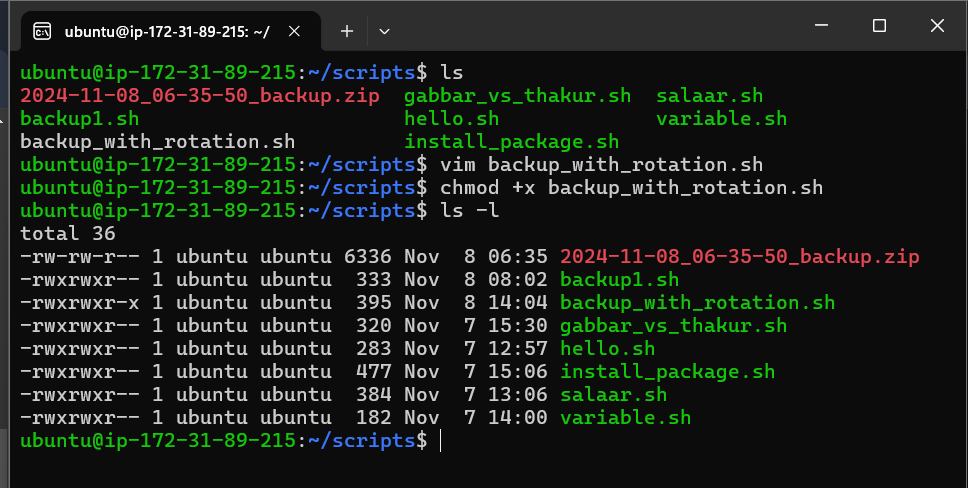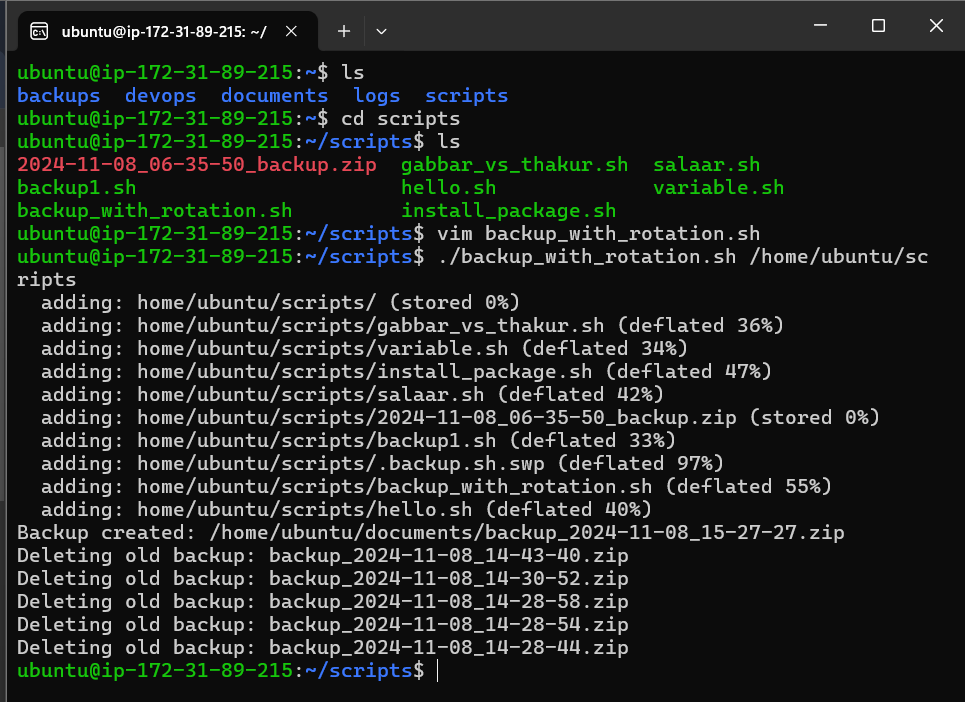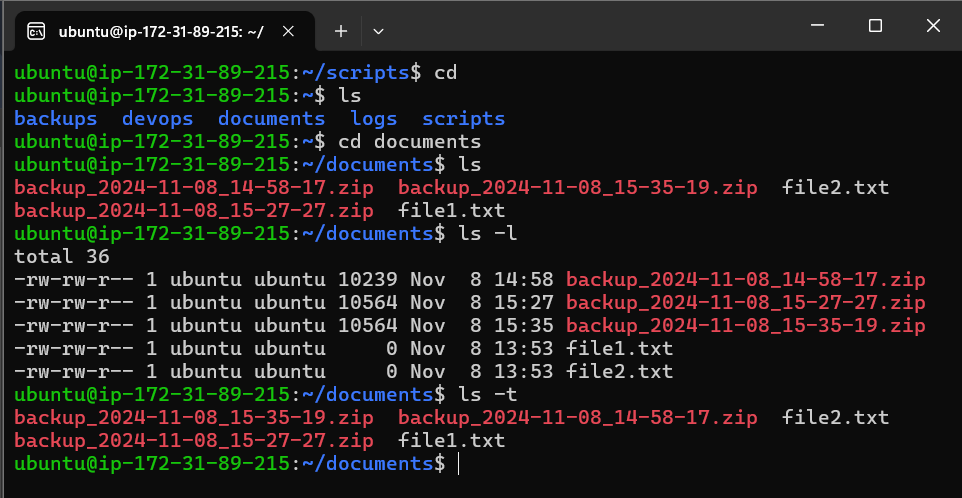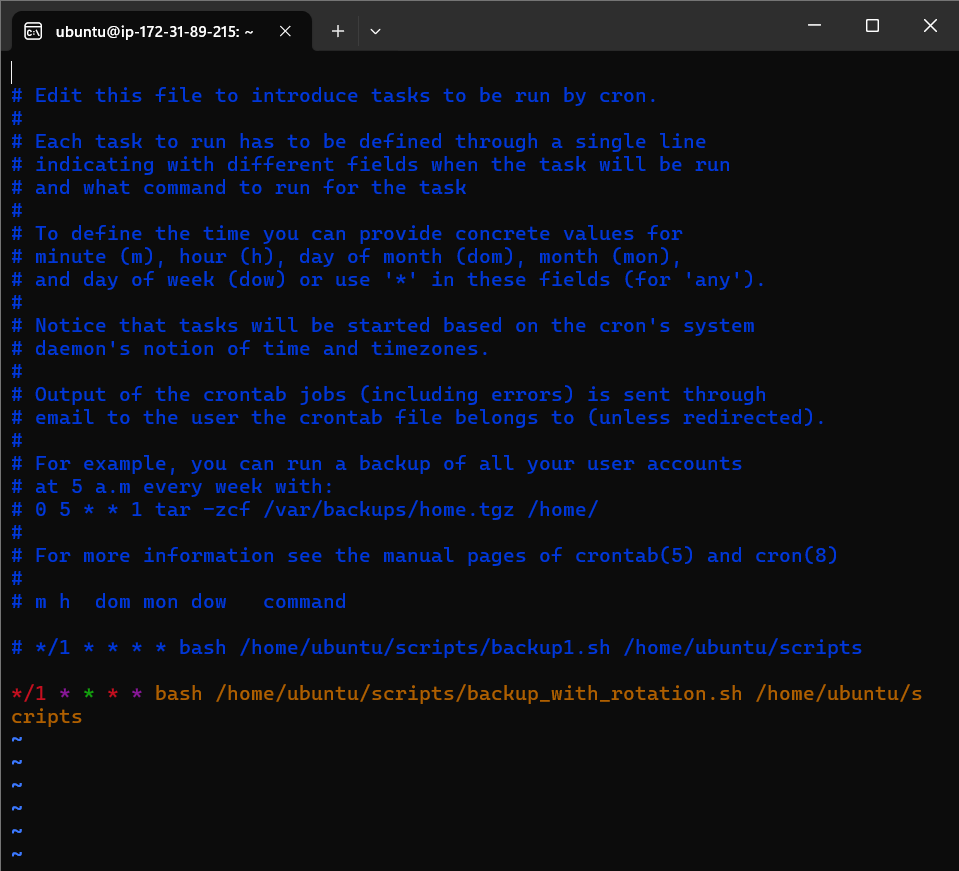Backup with Rotation
 Amitabh soni
Amitabh soni
Assignment: Backup with Rotation
Introduction:
In this assignment, we will create a shell script that automatically takes backups of a specified directory and impl ements rotation to keep only the latest three backups. We'll also automate the backup process using a cron job.
Hint:
To manage backups efficiently, you can use the following command to list files by modification date, skipping the first three:
ls -t | tail -n +4
This will list backups older than the latest three backups.
Steps to Complete the Assignment
1. Navigate to the Scripts Directory
Ensure all your scripts are in the scripts directory where you will create the backup script.
2. Create a New Script File
In the scripts directory, create a new script file called backup_with_rotation.sh using the following command:
vim backup_with_rotation.sh

3. Add the Backup Script Content
Below is the content of the backup_with_rotation.sh script, which will handle both the backup creation and backup rotation:
backup_with_rotation.sh:
#!/bin/bash
<<info
Author: Amitabh Soni
Date: 08/11/2024 (DD:MM:YYYY)
Description: This shell script will take a backup with rotation, storing only the 3 latest backup files of a 'scripts' directory in the /home/ubuntu/documents destination.
info
# Function to create a backup
function create_backup() {
# Timestamp for backup naming
timestamp=$(date '+%Y-%m-%d_%H-%M-%S')
# Target directory where backups are stored
target_dir="/home/ubuntu/documents"
# Backup filename
backup_file="${target_dir}/backup_${timestamp}.zip"
# Create zip backup
zip -r "$backup_file" "$1"
if [ $? -eq 0 ]; then
echo "Backup created: ${backup_file}"
else
echo "Error: Failed to create backup."
return 1
fi
}
# Function to rotate backups, keeping only the 3 latest ones
function rotate_backups() {
# Directory containing backups
target_dir="/home/ubuntu/documents"
if [[ -d $target_dir ]]; then
cd "$target_dir"
# List all zip files by modification date (most recent first), then skip the first 3
old_backups=$(ls -t *.zip | tail -n +4)
# Remove each old backup file
for file in $old_backups; do
echo "Deleting old backup: $file"
rm -f "$file"
done
else
echo "Error: Target directory $target_dir does not exist."
return 1
fi
}
# Run the backup function with the specified directory as an argument
create_backup "$1"
# Call rotate_backups function to manage backup rotation
rotate_backups
4. Make the Script Executable
Once you’ve created the script, you need to make it executable. Use the following command:
chmod +x backup_with_rotation.sh
5. Run the Script with Directory Argument
Run the script by passing the directory you want to back up as an argument. For example, to back up the scripts directory, use the following command:
./backup_with_rotation.sh /home/ubuntu/scripts

6. Verify Backup Creation
After running the script, a backup file will be created in the /home/ubuntu/documents directory. You can verify it using the command ls /home/ubuntu/documents.

Automating the Backup with Cron Jobs
Now that we've successfully created the backup script, let's automate the process using a cron job. This way, the backup process will run automatically at scheduled intervals.
7. Edit Crontab to Schedule the Backup
To set up a cron job, open the crontab editor with the following command:
crontab -e

8. Schedule the Backup Script
I scheduled the script to run every minute to test the automation. Add the following line to the crontab file:
*/1 * * * * bash /home/ubuntu/scripts/backup_with_rotation.sh /home/ubuntu/scripts

9. Verify the Cron Job Execution
After setting up the cron job, the backup will be created automatically. To verify that the cron job is working, you can watch the changes in the /home/ubuntu/documents directory using the watch command.
Video showing the cron job execution:
10. Confirm Backup Updates
You can also confirm that the backup is being updated automatically by checking the contents of the /home/ubuntu/documents directory.

Conclusion
In this assignment, we've created a shell script that takes backups of a specified directory, implements backup rotation to keep only the latest three backups, and automates the entire process using cron jobs. The solution ensures that backups are taken periodically and that older backups are cleaned up to save space.
Subscribe to my newsletter
Read articles from Amitabh soni directly inside your inbox. Subscribe to the newsletter, and don't miss out.
Written by

Amitabh soni
Amitabh soni
DevOps Enthusiast | Passionate Learner in Tech | BSc IT Student I’m a second-year BSc IT student with a deep love for technology and an ambitious goal: to become a DevOps expert. Currently diving into the world of automation, cloud services, and version control, I’m excited to learn and grow in this dynamic field. As I expand my knowledge, I’m eager to connect with like-minded professionals and explore opportunities to apply what I’m learning in real-world projects. Let’s connect and see how we can innovate together!